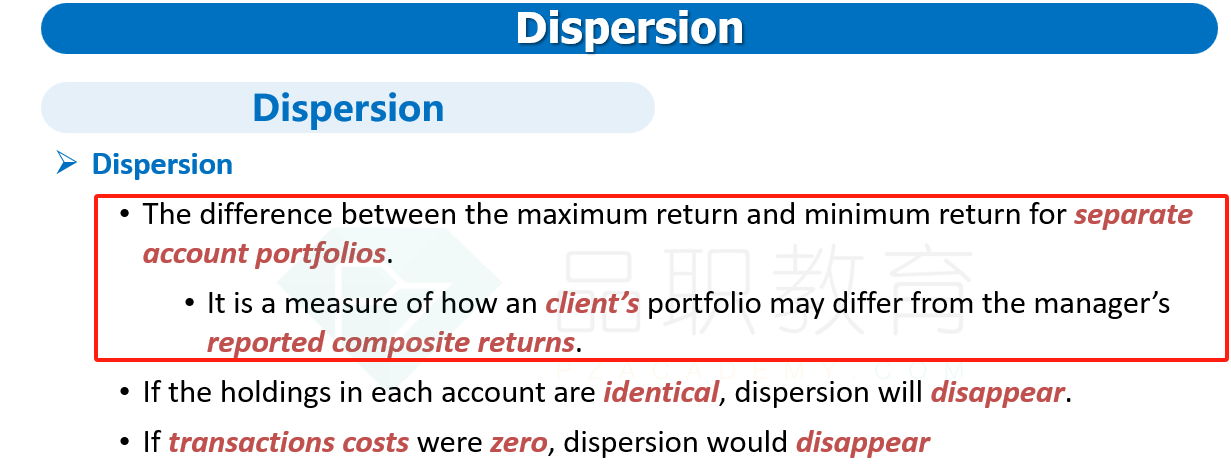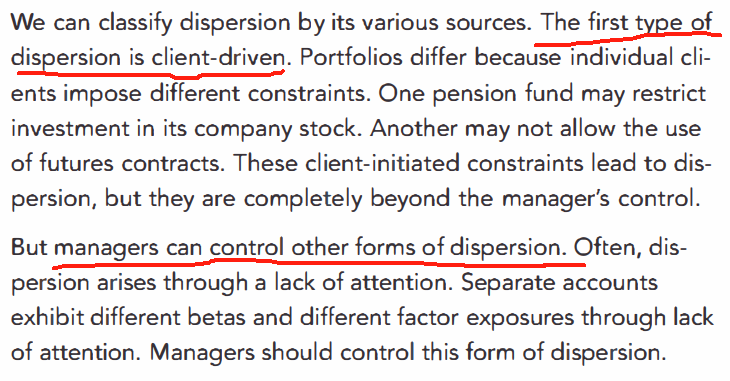NO.PZ2019042401000064
问题如下:
A portfolio manager at an investment firm manages a number of accounts for multiple clients. The manager is analyzing the dispersion that occurs among these accounts, with dispersion defined as the difference between the maximum and minimum return for the accounts. The manager explores the various drivers of dispersion and deliberates over how dispersion can be minimized. Which of the following conclusions is correct for the manager to reach?
选项:
A.
Dual-benchmark optimization can reduce dispersion and help achieve higher average returns.
B.
Dispersion is always client-driven since it refers to the variance in the performances of client portfolios managed by the same manager.
C.
A portfolio manager’s tracking error and dispersion tend to be proportional to each other over time.
D.
Portfolio managers can control dispersion and should aim to reduce any existing dispersion to zero.
解释:
C is correct. Dispersion is proportional to tracking error, with the constant of proportionality dependent on the number of portfolios managed by the manager.
A is incorrect. Dual-benchmark optimization can help reduce dispersion but at the expense of returns.
B is incorrect. Dispersion can be both client-driven, in which constraints placed by clients lead to differences in portfolio performance, and portfolio manager-driven, in which a lack of attention by the manager results in portfolios having different characteristics such as betas and factor exposures.
D is incorrect. Because of transaction costs, some dispersion is optimal. Managers can control dispersion but should not try to reduce it to zero.
请问考的哪个知识点,是哪一节的内容?








